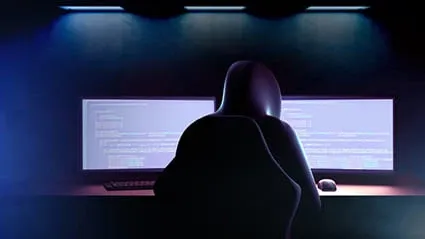This plan includes
- Limited free courses access
- Play & Pause Course Videos
- Video Recorded Lectures
- Learn on Mobile/PC/Tablet
- Quizzes and Real Projects
- Lifetime Course Certificate
- Email & Chat Support
What you'll learn?
- What is Hacking
- How to use go language for Hacking
- How to change MAC address using go language
- How to create a TCP network Scanner
- How to perform Man in the Middle attack using go
- Perform Packet capturing and interception
- Create your own malware
- Running Commands remotely on victim
- Navigating File system on victim machine
- Stealing Files and Folders from victim machine
- Uploading Viruses on victim Machine
- Creating your own keylogger
- How to Package your malware into a trojan
Course Overview
In this course we will learn hacking using Go language. Go is an open source programming language created by Google. As one of the fastest growing languages in terms of popularity, its a great time to pick up the language and start using it.
First we start with learning about why we should use go language and what are its advantages. Then we will start diving into what hacking is and what are different types of hacking. We will learn how to keep ourselves secure over LAN by developing a program for changing MAC address. Then we will create a Network Scanner that will help us in scanning devices over our local network and finding out their IP and MAC addresses. During our course, we will explore a lot of aspects of hacking using go language in detail and use important packages for Hacking purposes.
In the later part of our course, we will start developing programs that will help us in hacking. Firstly we will perform a man in the middle attack using ARP spoofing and then we will intercept traffic between users. Then we will create our own backdoor malware that will give us complete control over the victim machine using a power-shell , i.e you will be able to run commands on the remote PC. We will also develop a functionality to steal user files from his machine using our backdoor.
Pre-requisites
- Basics of go language
- A working PC
Target Audience
- Go language programmers who want to learn hacking
- people who want to learn fundamentals of hacking
Curriculum 104 Lectures 07:14:04
Section 1 : Introduction to the course
- Lecture 2 :
- Introduction to networking
- Lecture 3 :
- Pre-requisites for this course
Section 2 : Introduction to hacking
- Lecture 1 :
- Hacking introduction
Section 3 : Executing System Commands
- Lecture 1 :
- How to execute system commands
Section 4 : MAC address
- Lecture 1 :
- Running "ifconfig" command on PC
- Lecture 2 :
- changing MAC using ifconfig
- Lecture 3 :
- Writing the program
Section 5 : Network Scanner
- Lecture 1 :
- Creating a basic TCP scanner
- Lecture 2 :
- Scanning Multiple Ports
- Lecture 3 :
- Scanning Multiple Port Continued
- Lecture 4 :
- TCP Scanner concurrent
- Lecture 5 :
- TCP scanner concurrent continued
- Lecture 6 :
- Network Mapper Introduction -NMAP
- Lecture 7 :
- Nmap in golang
- Lecture 8 :
- Creating an nmap program in golang
Section 6 : Man in the middle attack - MITM
- Lecture 1 :
- Address Resolution Protocol
- Lecture 2 :
- ARP spoofing
- Lecture 3 :
- Installing ARP spoof program
- Lecture 4 :
- Enabling IP packet forwarding
- Lecture 5 :
- Performing Man in the middle attack
- Lecture 6 :
- Capturing Intercepted packets
Section 7 : Intercepting Packets
- Lecture 1 :
- Installing go-packet package in go
- Lecture 2 :
- Finding devices
- Lecture 3 :
- Searching for devices over a machine
- Lecture 4 :
- Capturing Packets
- Lecture 5 :
- Intercepting live traffic
- Lecture 6 :
- Intercepting traffic from source
- Lecture 7 :
- spoofed packets
- Lecture 8 :
- stealing credentials
- Lecture 9 :
- Stealing over HTTP
Section 8 : Malware - Creating your own malware backdoor
- Lecture 1 :
- Introduction to malware
- Lecture 2 :
- Creating hacker server
- Lecture 3 :
- Writing Victim program
- Lecture 4 :
- Running server and victim programs
- Lecture 5 :
- Clean up server program
- Lecture 6 :
- Clean up victim program
- Lecture 7 :
- Sending Data from server to victim
- Lecture 8 :
- Receiving data from hacker server
- Lecture 9 :
- Sending gob structs to victim
- Lecture 10 :
- Receiving gob structs at victim machine
- Lecture 11 :
- Running the program to send and receive gobs
- Lecture 12 :
- Executing command server side
- Lecture 13 :
- Exit condition
- Lecture 14 :
- Victim Side main function
- Lecture 15 :
- Server logic command execution
- Lecture 16 :
- Victim Logic command execution
- Lecture 17 :
- Victim Logic command execution Part 2
- Lecture 18 :
- Minor Error
- Lecture 19 :
- Executing Commands Complete program
Section 9 : Malware - File system navigation
- Lecture 1 :
- Introduction
- Lecture 2 :
- Setting up victim's main program
- Lecture 3 :
- Sending Initial current directory
- Lecture 4 :
- Receiving initial pwd in server
- Lecture 5 :
- Getting user input
- Lecture 6 :
- Reading user command
- Lecture 7 :
- Getting back results
- Lecture 8 :
- Loop navigation on server side
- Lecture 9 :
- Exit Condition on server
- Lecture 10 :
- Loop navigation on victim side
- Lecture 11 :
- Running the program
Section 10 : Malware - Uploading Viruses to victim
- Lecture 1 :
- Introduction how to transfer files
- Lecture 2 :
- Setting main function
- Lecture 3 :
- Check File's existence
- Lecture 4 :
- Reading file contents
- Lecture 5 :
- Creating buffer
- Lecture 6 :
- Sending File to victim machine
- Lecture 7 :
- Setting up main function in victim
- Lecture 8 :
- Saving file on victim's disk
- Lecture 9 :
- Getting back write status
- Lecture 10 :
- Uploading a file
Section 11 : Malware - Downloading Files from victim
- Lecture 1 :
- Setting up main function in victim machine
- Lecture 2 :
- Getting the list of files in current directory
- Lecture 3 :
- Sending list to hacker
- Lecture 4 :
- Receiving list at hacker
- Lecture 5 :
- Getting user input
- Lecture 6 :
- Converting user input to integer
- Lecture 7 :
- Sending file names to victim
- Lecture 8 :
- Reading file content from victim
- Lecture 9 :
- Writing File content hacker
- Lecture 10 :
- Downloading the file to hacker machine
Section 12 : Malware - Stealing Folders
- Lecture 1 :
- Downloading folder from victim
- Lecture 2 :
- Setting main function
- Lecture 3 :
- getting folders
- Lecture 4 :
- sending folder list to hacker
- Lecture 5 :
- Getting folder list and selecting folder
- Lecture 6 :
- getting folder name on victim
- Lecture 7 :
- Creating Zip file
- Lecture 8 :
- Zip file continued
- Lecture 9 :
- Connection
- Lecture 10 :
- Running Program
Section 13 : Malware - Trojan - Packaging a malware
- Lecture 1 :
- Introduction to trojan
- Lecture 2 :
- Packaging
- Lecture 3 :
- Running executables
- Lecture 4 :
- Running our malware
- Lecture 5 :
- Hiding console on victim
- Lecture 6 :
- Batch file
- Lecture 7 :
- Batch to exe
- Lecture 8 :
- Adding icon to executable
- Lecture 9 :
- Running exe
- Lecture 10 :
- How to perform attack over public internet
Section 14 : Keylogger
- Lecture 1 :
- Creating a keylogger using go-keylogger package
- Lecture 2 :
- Starting keylogger
Section 15 : Protection - How to protect yourself when online
- Lecture 1 :
- Protection
Our learners work at
Frequently Asked Questions
How do i access the course after purchase?
It's simple. When you sign up, you'll immediately have unlimited viewing of thousands of expert courses, paths to guide your learning, tools to measure your skills and hands-on resources like exercise files. There’s no limit on what you can learn and you can cancel at any time.Are these video based online self-learning courses?
Yes. All of the courses comes with online video based lectures created by certified instructors. Instructors have crafted these courses with a blend of high quality interactive videos, lectures, quizzes & real world projects to give you an indepth knowledge about the topic.Can i play & pause the course as per my convenience?
Yes absolutely & thats one of the advantage of self-paced courses. You can anytime pause or resume the course & come back & forth from one lecture to another lecture, play the videos mulitple times & so on.How do i contact the instructor for any doubts or questions?
Most of these courses have general questions & answers already covered within the course lectures. However, if you need any further help from the instructor, you can use the inbuilt Chat with Instructor option to send a message to an instructor & they will reply you within 24 hours. You can ask as many questions as you want.Do i need a pc to access the course or can i do it on mobile & tablet as well?
Brilliant question? Isn't it? You can access the courses on any device like PC, Mobile, Tablet & even on a smart tv. For mobile & a tablet you can download the Learnfly android or an iOS app. If mobile app is not available in your country, you can access the course directly by visting our website, its fully mobile friendly.Do i get any certificate for the courses?
Yes. Once you complete any course on our platform along with provided assessments by the instructor, you will be eligble to get certificate of course completion.
For how long can i access my course on the platform?
You require an active subscription to access courses on our platform. If your subscription is active, you can access any course on our platform with no restrictions.Is there any free trial?
Currently, we do not offer any free trial.Can i cancel anytime?
Yes, you can cancel your subscription at any time. Your subscription will auto-renew until you cancel, but why would you want to?
Instructor

59188 Course Views
1 Courses



 Tech & IT
Tech & IT
 Business
Business
 Coding & Developer
Coding & Developer
 Finance & Accounting
Finance & Accounting
 Academics
Academics
 Office Applications
Office Applications
 Art & Design
Art & Design
 Marketing
Marketing
 Health & Wellness
Health & Wellness
 Sounds & Music
Sounds & Music
 Lifestyle
Lifestyle
 Photography
Photography
















